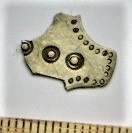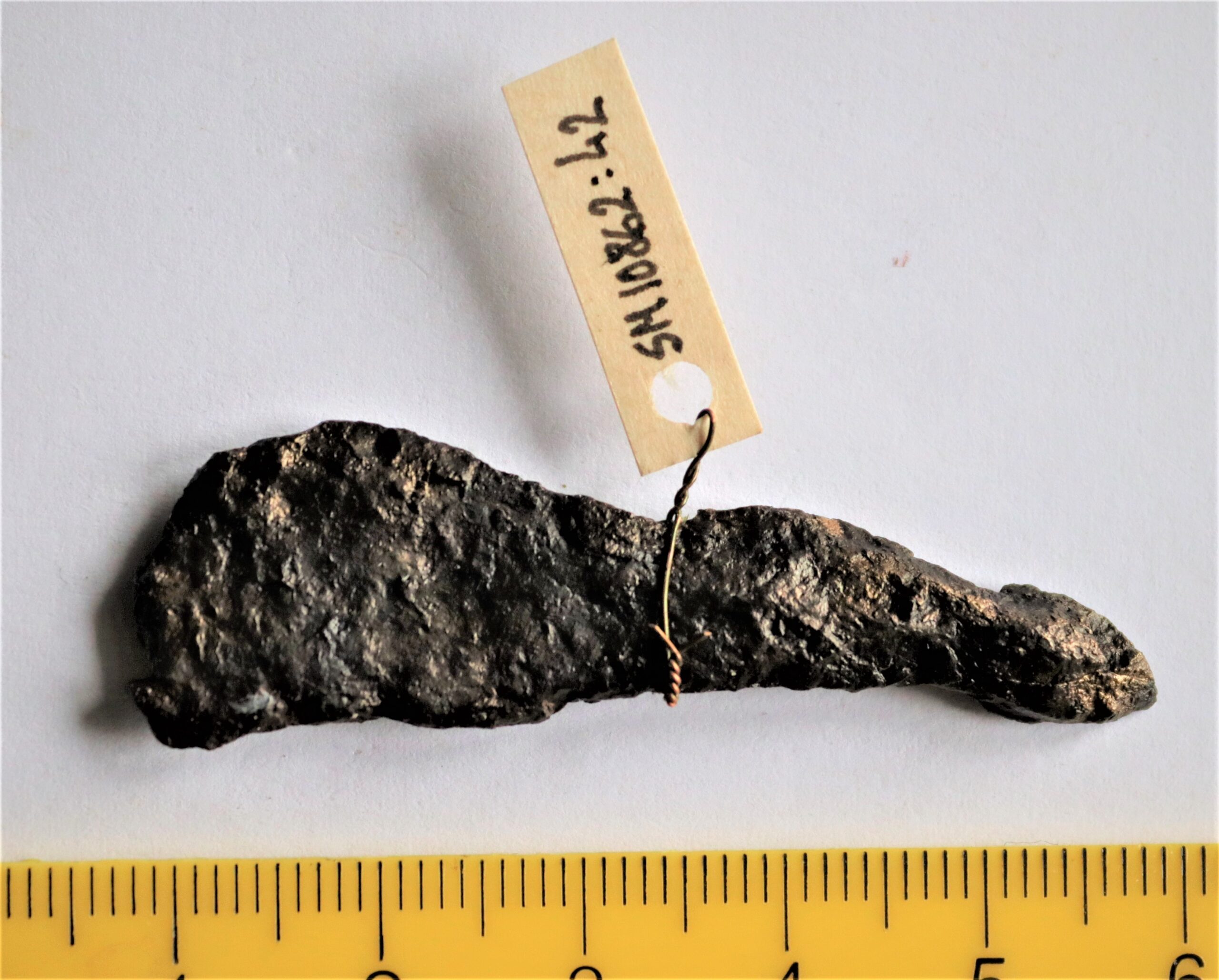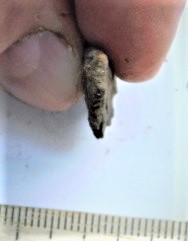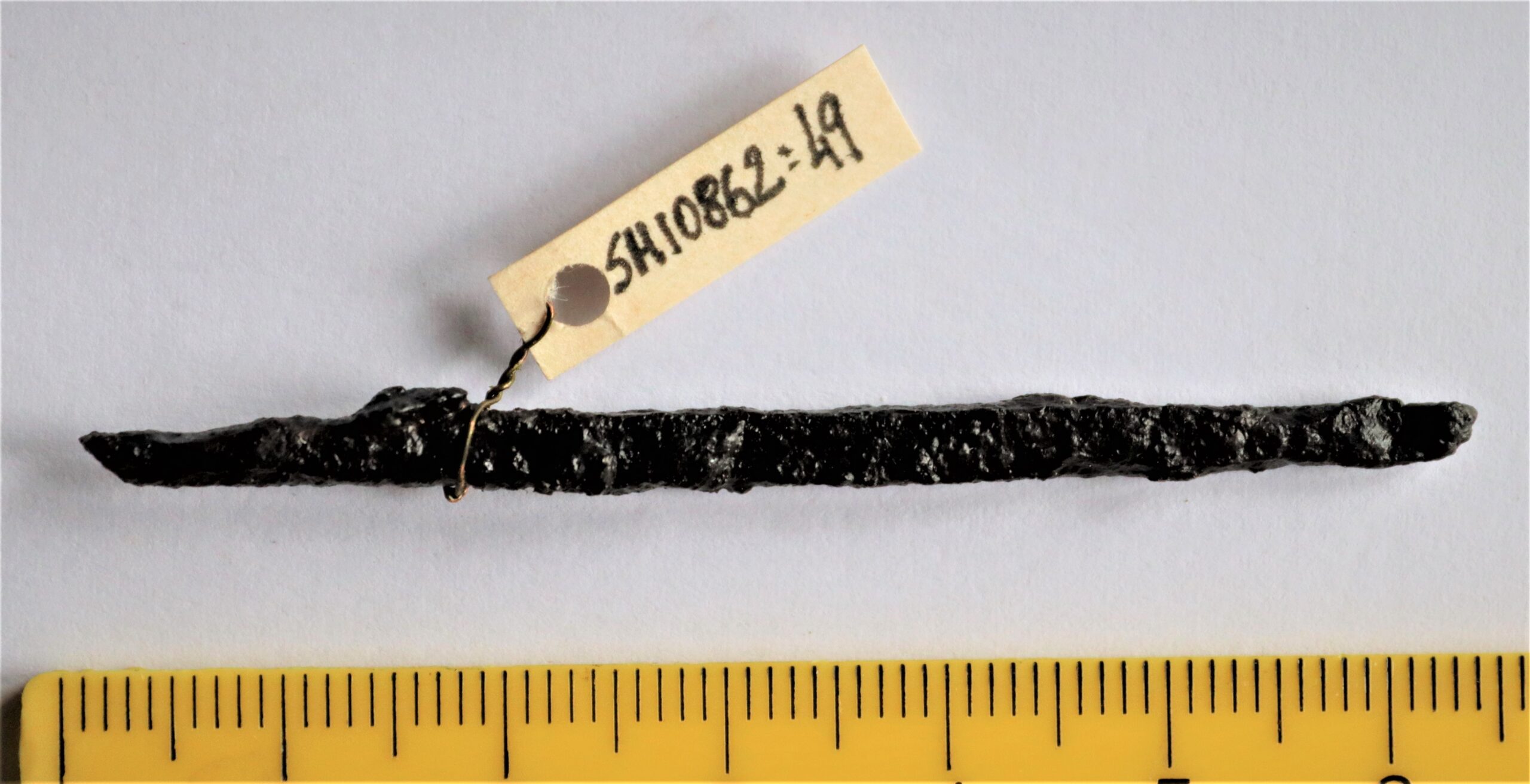Database
Our database is free to use for all history and archaeology enthusiasts. If you use our database, please do not forget to cite correctly:
Mägi, Marika; Palm, Piia Sandra. Archaeological Artefacts of Saaremaa. Foundation Osiliana / Tallinn University. Accessed: date.
The Osiliana Archaeological Database presents artefacts from Saaremaa and the surrounding small islands.
The database contains mainly Iron Age and Medieval finds that can be classified.
Undated metal or other pieces were generally excluded from the database.
Ceramics are represented by isolated examples.
The database is a work in progress and is constantly being updated.
Ure
Fragment of silver-plating. Ornament on the top consisting of three double circles, flanked by a band of small circles.


Fragment of silver-plating. Ornament on the top consisting of three double circles, flanked by a band of small circles.

Ure
Rod of iron, curved.

Ure
Knife fragment, iron. Part of the tang.


Knife (?) fragment, iron.

Ure
Melted piece, bronze.
Ure
Knife fragment, iron. Part of the tang and blade. The cross-section of the tang is flat quadrilateral. The cross-section of the blade is triangular and the width of the back is 4 mm.


Knife fragment, iron. Part of the tang and blade. The cross-section of the tang is flat quadrilateral. The cross-section of the blade is triangular and the width of the back is 4 mm.

Ure
Iron rod. The cross-section at the center is quadrilateral, but from the ends it is flat.
Ure
Artefact fragment, iron. Circular cross-section. The head is flat, and decorated with concentric circles.


Artefact fragment, iron. Circular cross-section. The head is flat, and decorated with concentric circles.
Ure
Crossbow brooch, bronze. The upper part is missing. The foot has been bent backward for a needle container and wrapped around the arch like a wire for four times. Underneath that and towards the foot of the arch are traces of gold plating.



Crossbow brooch, bronze. The upper part is missing. The foot has been bent backward for a needle container and wrapped around the arch like a wire for four times. Underneath that and towards the foot of the arch are traces of gold plating. That type of brooches was common in Estonia mainly during the 2-3d century, but they can also be dated to the 4th-5th century (Randla 2005, 123 jj). In Courland, similar ones have been dated to 2-3rd centuries. (Tautaviśius 1968, 131-13; Griciuvienė 2009, 33, 46).
Literature:
Griciuvienė, E (prepared by). 2009. Kuršiai. Genties kultūra laidosenos duomenimis. Baltų archeologijos paroda. Katalogas. The Curonians. Tribe Culture According to the Burial Data. Baltic Archaeological Exhibition. Catalogue. Vilnius –Riga.
Rohtla, M.-L. 2005. Crossbow fibula as a reflection of social status and relations. – Culture and Material Culture. Interarchaeologia, 1. Ed. by V. Lang. Tartu – Riga – Vilnius, 121–145.
Tautavićius, A (ed.) 1968. Lietuvos archeologiniai paminklai. Lietuvos pajūrio I-VII a. kapinynas. Vilnius.
The negative value refers to time Before Christ.






